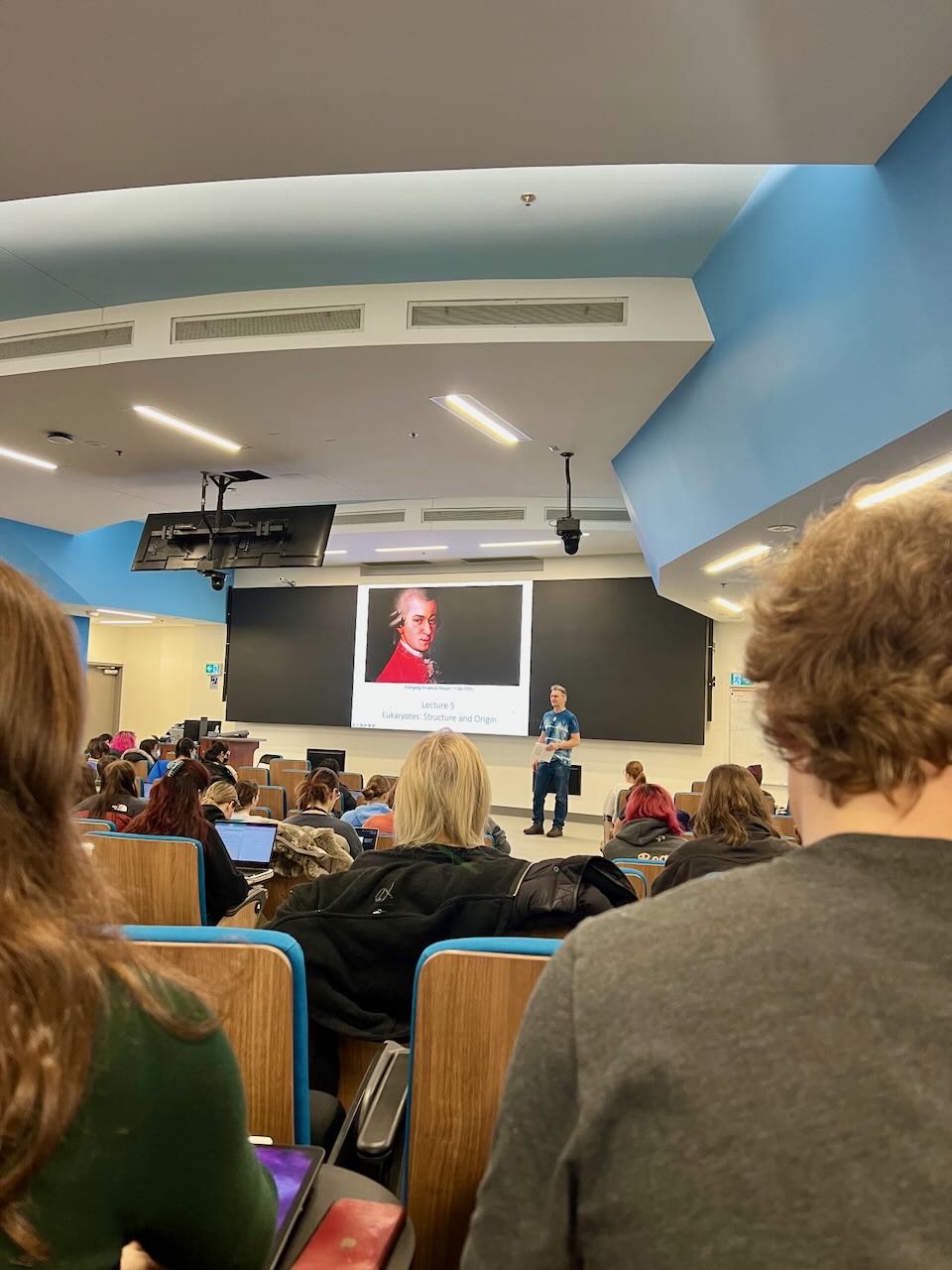
.jpeg)
.jpeg)
.jpeg)
Welcome to the Biol 200 webpage for Winter 2025
One of the most wondrous features of Biology is how evolution has developed so many different ways for organisms to grow, survive, and reproduce. The overall course goal is to provide students with the background knowledge and interpretive skills needed to recognize and appreciate the diversity of life and the evolutionary mechanisms that generated it, so that their future studies of individual organisms or biological processes can be set in an appropriate evolutionary and ecological context. Patterns of organizational complexity and species diversity since life originated are explained throughout the course in the mechanistic context of evolutionary processes and concepts such as adaptive radiation, endosymbiosis, structure-function relationships, horizontal gene transfer, and ecological impacts of changing environments.
Learning outcomes
By the end of the course students will be able to:
- Describe and discuss the diversity of living organisms across the ‘Tree of Life’ from both evolutionary and ecological perspectives – How structure in biology is inter-related with function
- Explain the primary and secondary mechanisms that generate biological diversity across the 'Tree of Life’
–Primary (Natural selection based on the combination of phenotypic variability within populations caused by genetic mutation and environmental spatial and temporal heterogeneity (e.g. landscape, climate….)
–Secondary (Features and impacts of diversity that generate more diversity) - Recognise, describe, and compare the principal unique features of a wide range of organisms including bacteria, archaea, algae, fungi, plants, and invertebrate and vertebrate animals
- Identify the phylogenetic relationships among the major groups of organisms, and distinguish their key characteristics using conventional taxonomic terminology and nomenclature
- Interpret the relative success and diversity of the major organism groups in terms of adaptations for growth, survival and reproduction
- Describe the timelines of major steps in evolution
Teaching team: Dr. Paul Grogan (first half - microbes, algae, fungi and plants); Dr. Tim Birt (Invertebrate and Vertebrate animals; Dr. Anna Rooke (tutorials).
Lecture Times: Mondays 12.30, Wednesdays 11.30, Thursdays 13.30.
Location: Biosciences Auditorium 1101
Assessment:
30% Tutorial activities over the semester
25% Mid-term exam (in-person)
10% Four online multiple choice quizzes over the semester
35% Final exam (including 10% overall synthesis section)
Pre-requisites: None
Calendar for the first half of the course (Dr. Grogan's section):

"Diversity across the Tree of Life is essentially the product of species evolving different ways to grow, survive, and reproduce in the context of environmental and biotically-mediated niche variability and occasional catastrophic extinction events."
Podcasts: What is the extent of biodiversity across the Tree of Life, and How and Why did it occur? The following short podcasts may help students grasp the principal over-arching concepts that I cover in the first half of the course, and that no doubt will apply to much of the content of the second half. Each of the four short podcasts (7-12 minutes) contains two concepts. I really hope they are interesting and useful to you, and I strongly recommend that you take good breaks between each of them to maximize their learning potential for you:
- Evolution by natural selection; Diversity begets diversity
- Structure-Function inter-relationships and the ecological niche; Surface area-to-volume ratio as a fundamental property across the Tree of Life
- Evolution by natural selection produces new traits, but can also dispense with ancestral ones (e.g. flagellum); Trend in life cycle reproduction modes from primitive to more advanced organisms across the Tree of Life
- Adaptive traits are often the product of evolutionary trade-offs between differing components of an organism’s niche; The evolutionary pattern of diversification across the Tree of Life is a product of both predictable and random factors - it could not have been foreseen, and its future is unknowable
Last Updated: 13 Jan 2025
Resources







